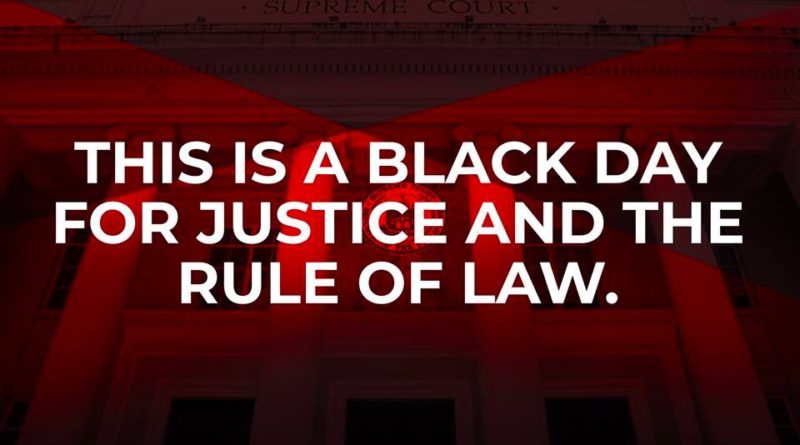OP-ED EDITORIAL: The Court overreached By Philippine Daily Inquirer
For the first time in our history, the Court voted to oust its leader; worse, the Court used the back door opened by the quo warranto case to drag the fifth highest ranking government official out of the building
ADVERTISEMENT
. Worst of all, five of the same justices who had grievances against the Chief Justice and testified at the House of Representatives against her, instead of inhibiting from the vote, ganged up on her; they formed the bulk of the 8-person majority. The decision, as Associate Justice Marvic Leonen described it in his dissent, was “a legal abomination.”That was part of what took our collective breath away—the monstrosity of it. As of the time of writing, the majority decision had still not been released, but when both the text and the context of the Constitution are clear, that members of the Supreme Court can be removed only through impeachment, no amount of rationalization can hide the obvious: The majority decision written by Associate Justice Noel Tijam can only be a lengthy exercise in justifying the unjustifiable.
ADVERTISEMENT
By a higher margin of 9-5, the Court actually found that Sereno had violated the Constitution for failing to file all the necessary statements of assets, liabilities, and net worth when she applied for the position of chief justice. (We are curious to know how the Court elevated this requirement into a constitutional mandate.) The Court should have seized this finding as the opportunity to return to the processes determined by the Constitution; if in its view its chief had committed an impeachable offense, it should have allowed the chambers of Congress, the only institutions tasked with responsibility for the impeachment process, to do their work.
For the Senate, the decision is a wake-up call. The Constitution entrusts the delicate matter of removing impeachable officials only to Congress, with the Senate serving as impeachment court. The quo warranto case deliberately sought to avoid that process; we mean that literally, because after conducting a lengthy committee inquiry into Sereno’s possible impeachable offenses at the House of Representatives, and with impeachment 100-percent certain, the administration changed tack and filed the quo warranto case at the Supreme Court—alleging essentially the same offenses as the impeachment complaint. Only two senators sought to intervene in the case, but now the decision has emboldened more senators to speak up about the constitutional issue that involves them: The quo warranto case usurps the Senate’s right to remove an impeachable official. Invoking this right, Senate President Aquilino Pimentel III reminded the Supreme Court that it was “not supreme in all things,” and asked it to review its decision.
For the legal community, this is a moment of reckoning. When over 100 law professors, led by current and former deans, sign a statement reiterating the plain truth that “the Constitution provides only one means to remove a sitting Chief Justice,” the Court should have read that as the purest form of an amicus brief. The shapers of the next generation of lawyers were acting as true friends of the court, seeking to prevent it from making a monumental mistake. Now that a stubborn Court still made the mistake, the country’s lawyers must make known to the justices their views: that the decision has undermined the rule of law, the legal profession, and the Court itself. Thousands of law students and aspiring lawyers who were taught that Lady Justice is blind now see for themselves that justices take off the blindfold and hold personal grudges.
For the country’s citizens, the decision is a danger sign, a warning. Now that the Supreme Court has shown itself capable of justifying the entirely unjustifiable, the floodgates are open, and the other institutions which serve a check-and-balance purpose are rendered vulnerable: the vice presidency, the Office of the Ombudsman, the media, the military. If the Chief Justice herself can be ousted through unconstitutional means, who, really, is safe?
The Philippine Daily Inquirer / 05:14 AM May 12, 2018









